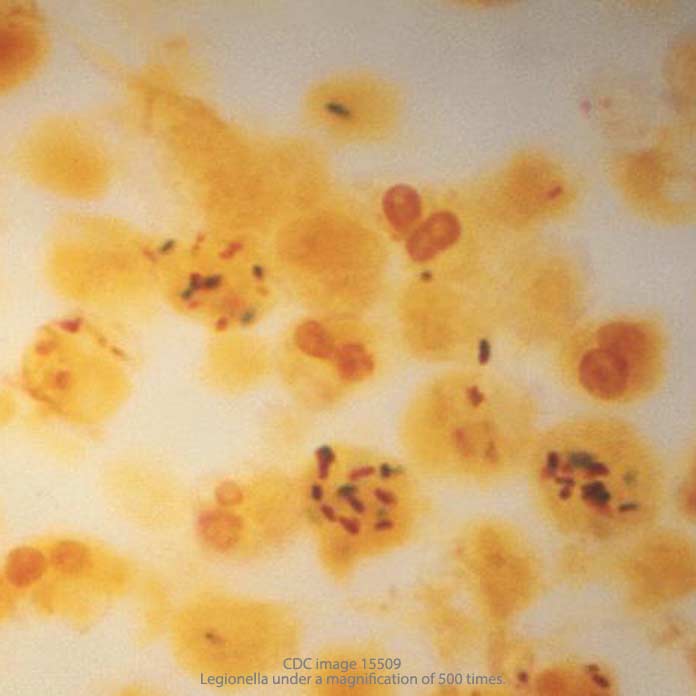Washington State health officials are investigating a case of Legionnaires’ disease in a patient who had been at Western State Hospital in Lakewood, WA before being moved to another medical facility with symptoms of Legionnaires’ pneumonia.1 This severe type of pneumonia is caused by breathing in water mist (or aspirating water) contaminated with Legionella bacteria.
According to an article by the Associated Press, “Two other Western State patients are being treated for pneumonia” but they have not yet been diagnosed as having Legionnaires’ disease.
The hospital’s water system is being tested. Hospital-acquired Legionnaires’ disease is generally caused by a contaminated water system. Contaminated water mist can get into the air via air conditioning, or even running hot water through a faucet.
“People with compromised immune systems are at greater risk of contracting Legionnaires’ pneumonia,” said Fred Pritzker, a lawyer who represents Legionnaires’ disease victims. “Because of this, hospitals should take every precaution to prevent Legionella contamination, and water systems should be regularly tested.”

Can I Sue a Hospital for Legionnaires’ Disease?
A patient can sue a hospital for Legionnaires’ disease compensation if there is evidence to support the personal injury claim. If a patient does not survive this deadly illness, the family may have a wrongful death lawsuit. A Legionnaires’ pneumonia lawsuit generally seeks compensation for medical expenses, lost wages, pain, emotional suffering, disability and other lawful damages. Generally, in wrongful death cases, the family may seek compensation for loss of care and companionship,funeral expenses, lost income to the family and other damages.
Attorney Fred Pritzker Discusses 6 Steps to Proving a Claim
Below is the process our law firm follows in evaluating LD claims.
- Confirm the Legionella pneumonia diagnosis;
- Confirm the presence of Legionella bacteria;
- Identify possible sources of illness;
- Review the results of the epidemiologic investigation, which involves generating hypotheses about possible sources of exposure and then questioning people who may have been exposed to or sickened by that source. Statistical analysis of the data generated by the answers to the question helps to identify the characteristics of the outbreak patients and, importantly, the specific source of the Legionella bacteria;
- Review the results of the environmental investigation, which includes testing water samples and examining maintenance records; and
- Review the results of the laboratory investigation.
Every case of Legionnaires’ Disease is different. It’s not always possible (or even necessary) to obtain all of the data mentioned above to successfully resolve a case. It is important that you consult a lawyer with experience in this area to protect your legal rights.
News Source: 1. Bellisle, Martha. “Western State Hospital patient has Legionnaires’ disease.” Associated Press. The News Tribune. 14 Dec. 2016. http://www.thenewstribune.com/news/local/article120843568.html